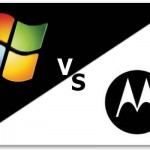Types of Mutual Funds: A Primer

There are many varieties of mutual funds and they each will have different strategies and different goals. Before you go shopping for your particular mutual fund match, you need to know what your investment objectives are. Do your needs demand maximum capital gains, or a high current income as an investment objective? Perhaps you are a risk taker and speculation is what you have in mind. An individual fund will have a particular policy and investment objective that makes it unique. Funds are categorized by their stated policies and objectives and within a category will be similarities in management style, risk levels and expected percentage of returns. Learn who you are and what you need in an investment vehicle by taking a risk tolerance quiz. This will help you understand what type of mutual fund will serve your investment needs best.
Following are the main types of mutual fund classifications:
Equity Income Fund: This is a mutual fund that invests in high yielding common stocks and is intended to provide current income and protect the invested capital. While the protection of the invested capital is important and by extension the realization of capital gains is also important, these issues are not the first goal of equity income funds. The funds invest mostly in high value common stocks, some convertible securities and an assortment of preferred stock, junk bonds and high grade foreign bonds. The strategy is to secure investments that will produce big dividend payouts first and produce price appreciation as a close second goal. Usually the equity income funds concentrate on high quality investments that are not as volatile as the general market and are a low risk stock investment.
Growth Funds: The goal of a growth fund is to increase the value of the investment. This is called capital appreciation. The objective is long term growth with the end result of achieving hefty capital gains when the securities are sold. Growth funds generally do not offer anything in current income and pay no dividends. They put most of their investments into stable, established large or mid-cap firms that have better than average growth outlooks. These are seen as long term investment vehicles for young aggressive investors who want to increase capital and are not concerned with current income.
Aggressive Growth Funds: When your risk tolerance is high aggressive growth funds may be suited to your style. These are what investors call speculative investment vehicles and they buy stocks of small, untested companies whose stocks tend to be volatile. Aggressive growth funds are popular when the market is doing well but when the market sinks they can take substantial losses. The objective is to get big profits from capital gains. To achieve this goal, aggressive growth funds may use turnaround situations, buy on margin, use hedging techniques or sell short. The speculative natures of these investment practices make aggressive growth funds very volatile, and while they do well in hot markets, they tank in cold markets.
Bond Fund: A mutual fund that invests with income as the first goal. Because bonds are a loan to the issuer the value of the bond price bounces with changing interest rates. These are pretty safe investments but they are not fool proof. Bond funds can be bought and sold quickly and are considered more liquid than a direct bond investment, they are an affordable way to get wide diversification in bonds which are very expensive, and the bond fund management reinvests your interest automatically if you choose so you can get compounded rates of return. There are a wide variety of bond funds available and what ever your style and your goals you can find something to match your needs. Consider these variations; 1. Municipal bond funds which use tax exempt bonds that are issued by government entities. 2. Corporate bond funds which reflect debt obligations of U. S. Corporations. 3. Mortgage Backed Securities Funds which reflect residential mortgages. 4. United States Government Bond Funds which use treasury or other government securities.
Balanced Funds: The strategic goal of a balanced fund is to balance returns on current income and long term capital gains. A fund portfolio of stocks and bonds brings in current income from the bond interest payments and the stocks generate long term growth of capital assets. Balanced funds tend more toward a quarter to a half of the portfolio in bond securities in order to keep a high level of current income but the funds may shift the balance toward capital appreciation or back toward higher current income. The more fixed income securities (bonds) in the portfolio the higher the income will be, when the portfolio is weighted with more stocks the emphasis changes to long term capital gains.
Stock Funds: Stock funds generally have a higher risk than most bond funds and do not offer current income. Stock funds are used to increase value; this is called growing your money. Stock funds may also be called Equity Funds, Growth Funds, Value Funds, or Blend Funds.
Value Funds: A value fund is a sub type of a Stock Fund that concentrates on undervalued stocks. This means the fund manager looks for undiscovered companies which appear to have good growth potential but have not started the rapid growth that attracts attention yet. The fund will look for low price to earnings ratios and high dividend payouts and invest in shares with the strategic goal of amassing intrinsic value, realizing growth and buying into a promising future. Value funds are considered a conservative investment that offers attractive returns with low volatility and low risk.
Index Funds: This is a group of stocks that focus on a segment of the market. The strategy is to match an index such as the Standard and Poor 500 or the NASDAQ. These funds tend to have low operating costs because the point is simply to match an index, not to find big deals or sexy trends. Index Funds may be international such as Global funds, Foreign Funds, Country Specific Funds, or Emerging Market Funds, or they may be Sector Funds which concentrate on a segment of the market.
Growth and Income Funds: This type of fund is related to the Balanced Fund because the goal is to achieve both long term growth and current income. The difference is the primary strategic goal is big capital gains. They may have as much as 80% to 90% of their money in common stocks and emphasize high quality growth securities in the portfolio. These funds can generate a big return but increased risk is associated with the potential for good returns. Consider this type of fund if you can tolerate price volatility and tend to be a risk seeking investor.
Money Market Fund: This is a pooled asset fund that invests in short term high cost, high yield money market instruments. T-Bills, Bank CDs, Corporate commercial securities, Short term Municipal securities are all loans to the issuing entity and average individual investors could not afford this investment alone. The beauty of the mutual fund is that with hundreds or thousands of investors pooling their money this low risk, convenient, safe and profitable type of fund allows investors to accumulate capital.
Socially Responsible Funds: In the socially, environmentally, and politically aware times we live in, the demand for funds which cater to socially responsible investors has grown. The marketing strategy for a socially responsible fund is to actively incorporate ethical and moral decisions into the choices of securities the fund invests in. The end goal is to achieve profitability while including those ethical, moral, and environmental caveats into the process. Generally speaking Socially Responsible Funds will not invest in tobacco companies, or companies involved in alcohol, gambling, or weapons of war. Socially responsible investors boycotted companies doing business in South Africa to affect the demise of Apartheid and may boycott companies that are not economically responsible or animal friendly. These funds have a lower average return due to the limitations placed on them but investors who are passionate about their social concerns find this an acceptable price to pay.
Hedge Funds: Surprise! This is not a mutual fund�.in spite of what it sounds like. Hedge funds are private business partnerships generally in the form of a limited liability partnership and are mostly unregulated. The stated strategy and goal of a hedge fund is usually to preserve the value of capital and generate healthy returns in hot, cold or lukewarm market conditions. The partners are usually institutional or wealthy individuals. Here are some key differences between mutual funds and hedge funds.
Comparison:
Mutual Funds
– Very highly regulated and monitored
– no qualifications needed to invest
– The more investors pooling their money the better deals the fund can find.
– Minimum investments may be as low as $50. and average around $1000.
– Performance is transparent and open
– low risk, stable and safe investment opportunity
Hedge Funds
– unregulated
– limited to accredited investors (investor must be at least a millionaire)
– limited number of investors
– minimum investment may be in the millions of dollars
– secretive about price quotes and reports
– high risk, unstable investment vehicle
Reference:
Gitman, L., and Joehnk., 2003, Fundamentals of Investing, Pearson Addison Wesley, Boston Ma.
Woodward, D., 2005, Discover The Flavors That Mutual Funds Come In, About.com, New York Times.






